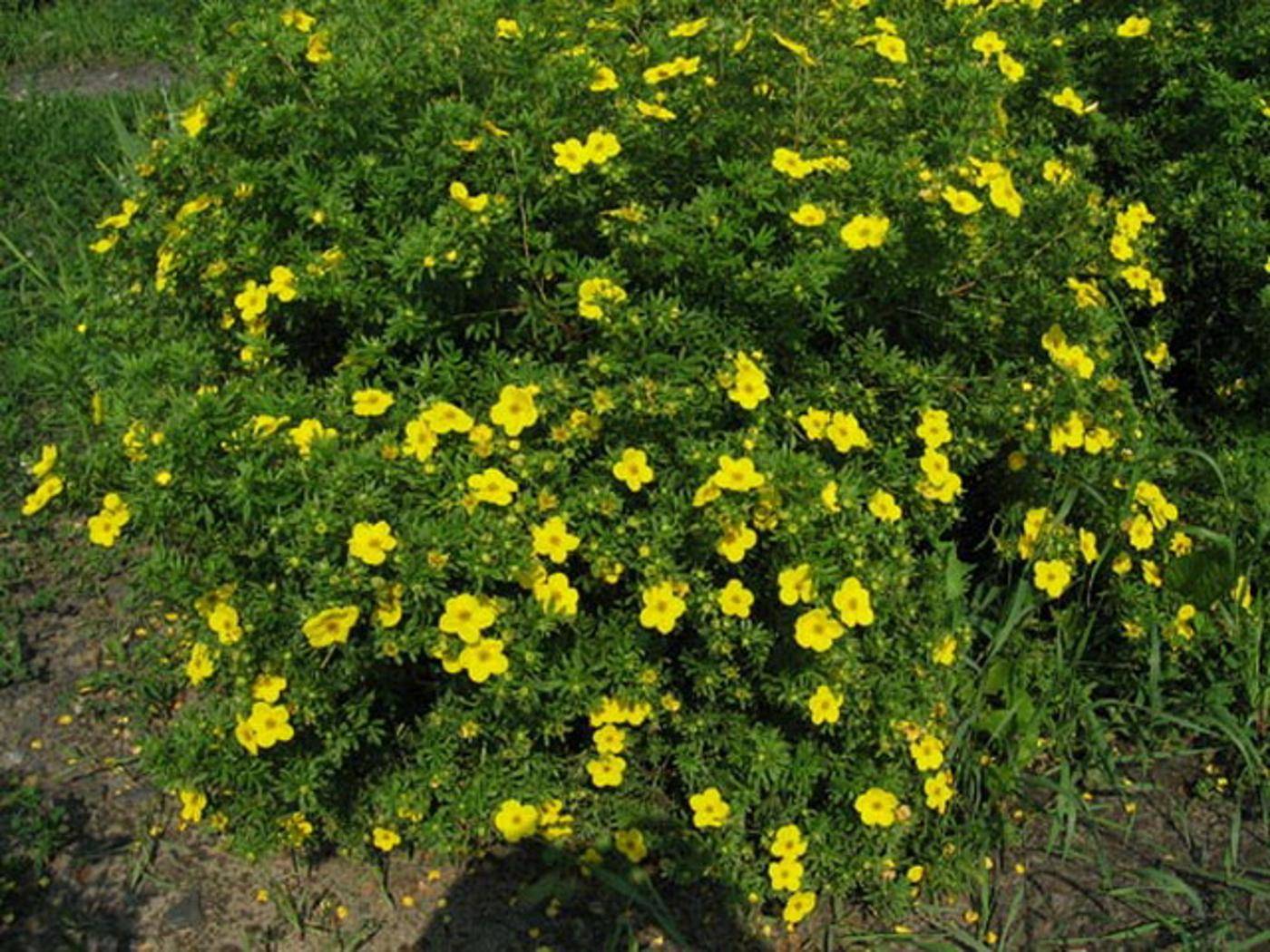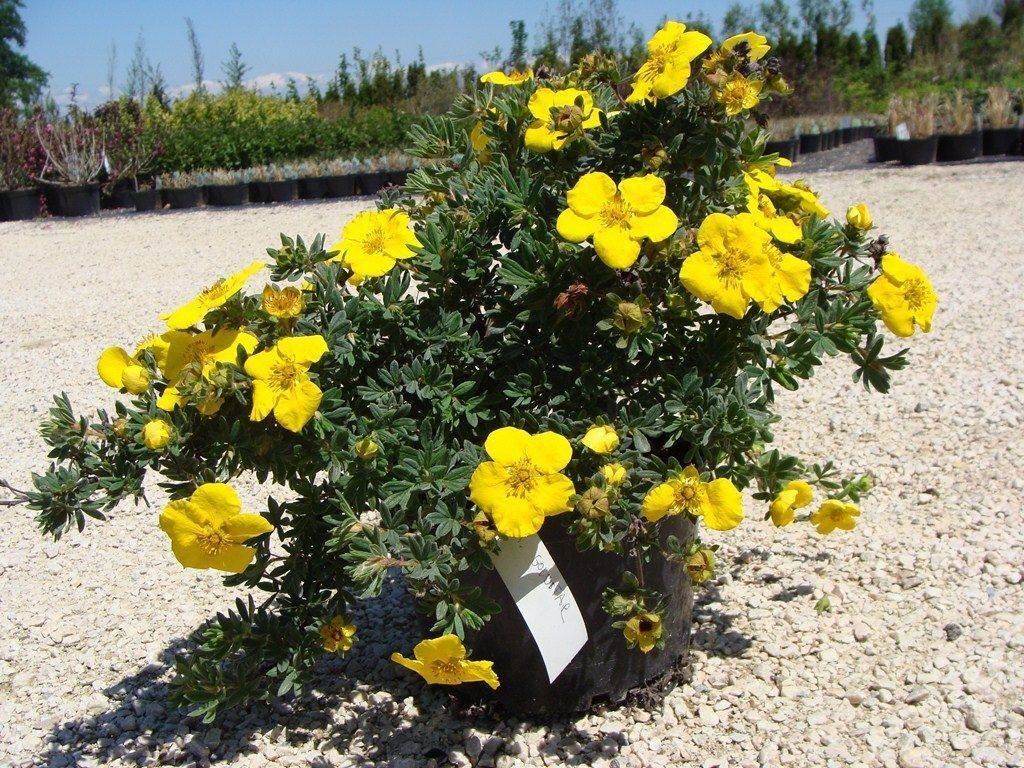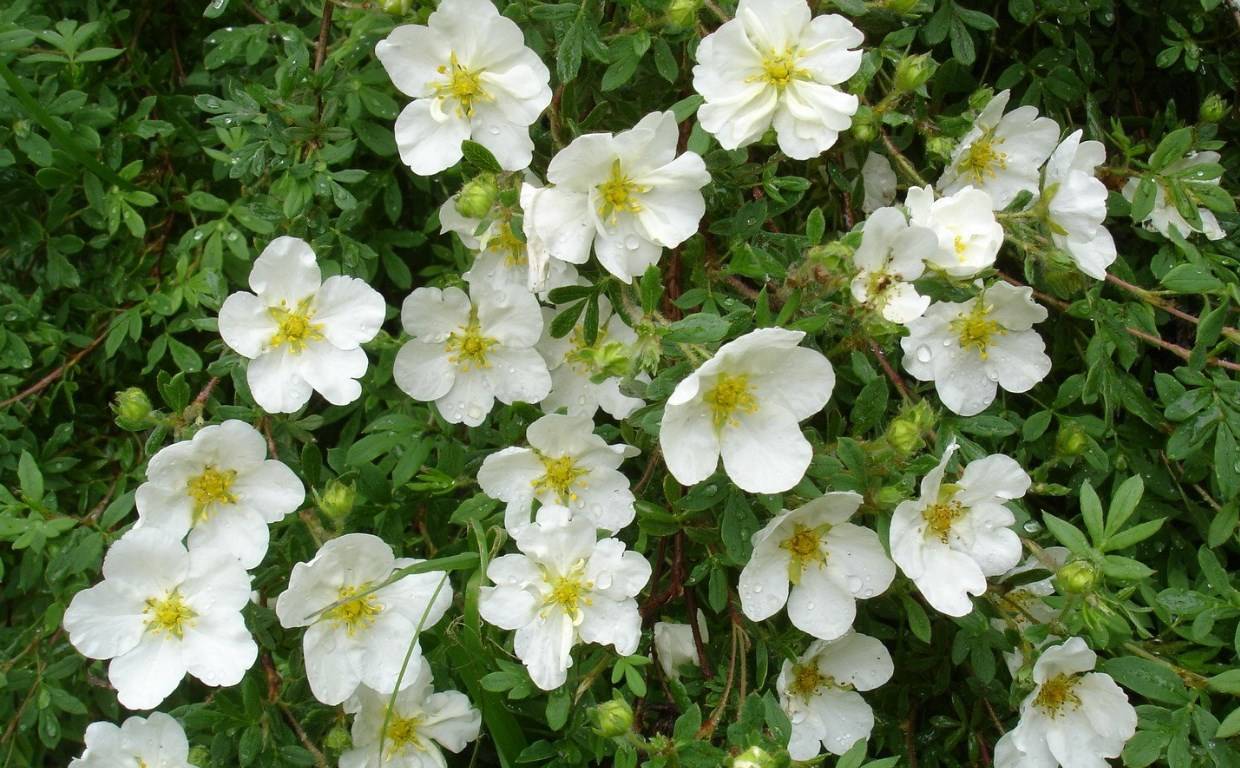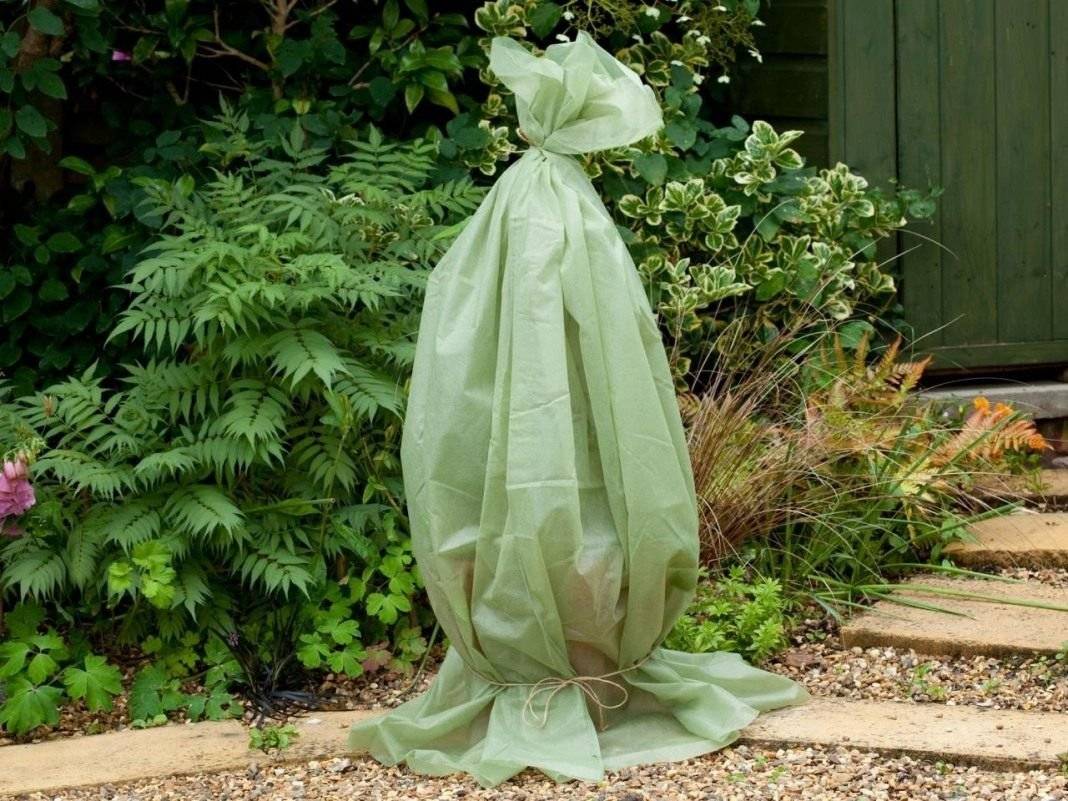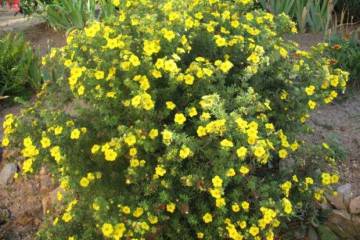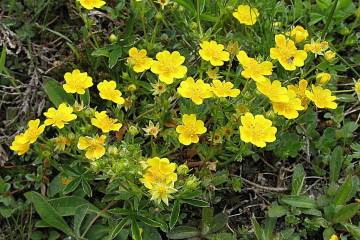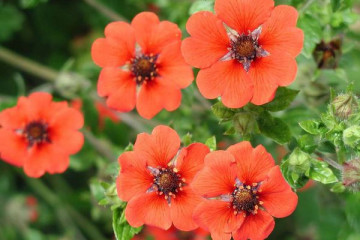Shrub Potentilla - what it looks like, types and varieties
Content:
Shrub cinquefoil, daziphora, cinquefoil or kuril tea are the names of an erect and branched shrub. It attracts attention with its different colors and unpretentiousness. Perfect for decorating curbs, alpine slides, hedges, and simply as a garden decoration. The plant is in demand in folk medicine, due to the high content of vitamin C. Tea is made from dry and fresh leaves.
The origin and appearance of shrub Potentilla
The cinquefoil has been known since ancient times for its beneficial properties. The plant has hemostatic, antimicrobial, astringent and choleretic properties, so it was often used for treatment by Tibetan healers. The places of growth of Potentilla are the Caucasus, North America, Asia, the Far East, Siberia, Western Europe, Russia. She loves deciduous, pine forests, river banks, rocks, rocky slopes. The longevity of the bushes can be up to 30 years.
Description of flowering shrub Potentilla
The plant has golden yellow double flowers up to 3 cm, which are collected in small brushes or single. The flowering period lasts from June to September. After flowering, fruits are formed that do not in any way affect the timing of the release of new flowers. Some gardeners remove the fruit, but this is not necessary.
The use of shrub Potentilla in landscape design
The plant is used to create hedges, rockeries, alpine slides, to decorate a flower garden, garden, borders, mixborders. It is often combined with plantations such as barberry, cotoneaster, thuja, juniper, hosta.
Types and varieties of shrub Potentilla with a description
There are over 200 types of Potentilla. About 150 species grow in Russia. Perennial varieties are popular among gardeners.
Cinquefoil yellow Goldfinger
The height of the shrub reaches from 1 to 1.5 m. The five-leafed plant has dark green foliage. The flowering period is from early summer to October. Numerous yellow flowers up to 5 cm in diameter appear on the bush.
Pink Cinquefoil Pink Queen
A ground cover plant with a height of 60-80 cm, and can grow up to 1.2 m wide. Numerous flowers of a pale pink color with a yellow center and a diameter of 3 cm appear on the bush. The flowering period of the pink princess lasts from May to November. The dark green foliage is small, feathery and complex. Creeping shoots, red-brown.
Red cinquefoil Red Ice
The creeping stems reach 65 cm in height, the diameter of the crown of the plant is up to 1.3 m. The foliage has a light green tint. First, red-orange flowers appear in spring, and in summer they turn yellow-orange. Orange Potentilla flowers are up to 3.5 cm in diameter. The flowering period begins in June and ends in October.
Hybrid cinquefoil
A perennial herb with an oblique or vertical root system.The diameter of the flowers is 4 cm, they are collected in corymbose or racemose inflorescences. Erect and branching stems reach 90 cm in height. The five-leaf corolla can be pink, red, dark purple, or yellow. The most popular varieties of hybrid Potentilla are Yellow Queen and Master Floris.
Cinquefoil large-flowered
Small shrub up to 20 cm high with horizontal shoots. The leaves are characterized by a trifoliate structure, dark green with gray. Large-flowered Potentilla begins to bloom in mid-summer. She has beautiful large, single and golden yellow flowers.
Transplanting shrub Potentilla after purchase in the open field
It is better to purchase seedlings in a nursery in mid-April and immediately plant them in the ground in a permanent place. The plant should have several shoots and a small crown. It is better not to buy a cinquefoil in the flowering stage, because abrupt changes will lead to the development of diseases and impaired growth.
The soil for Potentilla should be slightly acidic, fertile, water and air permeable, therefore lime and mineral fertilizers should be periodically added to the soil. It is better to grow in such a substrate - sand, peat and leafy soil in a ratio of 1: 2: 2.
An ornamental shrub is best planted in the ground in mid-spring, when the snow has completely melted. 20 minutes before planting, it is necessary to water the plant with settled water at room temperature. Step by step process:
- Dig a hole with a diameter of 50 cm and a depth of 60 cm (its size should be twice as large as the rhizome of the bush).
- At the bottom of the pit, drainage from expanded clay or small crushed stone is laid out with a thickness of about 15 cm.
- The seedling is removed from the container.
- The cinquefoil is lowered into the hole and covered with soil.
- The plant is watered and more soil is added to ground level.
- After half an hour, the five-leafed leaf is watered with liquid top dressing to stimulate growth and mulching is carried out.
The tree bush does not tolerate both the scorching sun and the lack of ultraviolet radiation, so it is better to choose partial shade, where the rays will break through in the evening and morning. The cinquefoil prefers an open space, then it will grow and bloom more luxuriantly. The cinquefoil flower is a long-liver, so it is worth considering in advance the neighborhood with other plants.
It is necessary to plant Kuril tea in the evening or in the morning, when the sun's rays do not burn. For this process, seedlings and seeds are suitable, which you can collect yourself. Seed collection is carried out in August or early September. Store them in a cool place.
Reproduction of shrub Potentilla
The plant can be propagated in several ways: by seeds, layering, cuttings, dividing the bush.
Propagation by cuttings
From last year's growth, young stems are cut, the lower leaves are removed and the cuts are treated with an antiseptic. The prepared material is planted in the ground in a dark place under a glass jar or greenhouse. After 3 weeks, the plants can be planted in a permanent place. Periodically, inflorescences are plucked from the cuttings, slowing down the development of Potentilla. Humidity should be maintained with frequent irrigation.
Reproduction by layering
The cinquefoil can be planted with vertical and horizontal layers.In both the first and second cases, you will need to pull the stems at the base with a soft wire, and then make cuts for better rooting. Shoots should be tilted to the soil, sprinkled with earth and secured. In the fall, you can start separating the shoots from the main bush.
Dividing the bush
A four-year-old bush is dug up, washed and cut into pieces with 2 or 3 buds. The roots are lubricated with a stimulant for the formation of the root system and planted in a new place. The division of the bush is carried out in the fall or warm spring.
Features of care and cultivation in the open field
After planting, problems may arise that even a novice gardener can cope with. Recommendations for the care and planting of Potentilla:
- Pruning. The procedure will rejuvenate the shrub and improve its general condition. It is held in early April. Correct pruning is 50mm above the bud at a 30 degree angle up from the ground. An old plant (over 7 years old) requires cutting the stems up to a third of their length.
- Selecting a seedling. It is better to acquire a young bush in a nursery in mid-April and immediately plant it in the ground in a permanent place. The plant should have several shoots and a small crown. It is better not to buy a cinquefoil in the flowering stage, because abrupt changes will lead to the development of diseases and deterioration of development.
When caring for and growing Potentilla, the shrub soil in the root circle must be periodically weeded, loosened, fertilized and moistened.
The plant is watered as the soil dries up with the calculation of 12 liters for each shrub every 12 days or once every 7 days with foliage spraying in case of drought. It is forbidden to allow the soil near Potentilla to begin to harden and crack. If you plan to do mulching, then pour in a quarter less water. Watering should be stopped at the end of September.
It is recommended to feed the plant in April and throughout the summer season. The best fertilizer options are:
- solution with ash (for 5 liters of water 300 g) twice a month;
- liquid humic fertilizer every 14 days;
- mullein solution (1:10 with water) three times a month.
In a specialized store, you can buy a top dressing that will suit exactly the Potentilla.
The plant needs pruning. The procedure helps to rejuvenate the shrub and improve its general condition. It is held in early April. Correct pruning is 50mm above the bud at a 30 degree angle up from the ground. An old plant (over 7 years old) requires cutting the stems up to a third of their length.
Features of care during flowering and dormancy
Kuril tea is not very picky, but during flowering it needs regular watering. With a lack of moisture, the foliage begins to crumble. In the morning, you should irrigate the plant with a spray bottle. During this period, feeding and pruning are not carried out.
A perennial plant does not need shelter for the winter, because it has a high degree of frost resistance. But these are not all varieties. The cold-hardy quinfoil can be covered if the seedlings were planted in the fall or the cuttings have recently taken root. In autumn and winter, no special action is required in relation to the shrub.
During the winter season and frost, it is recommended to make a shelter for the shrub. The frame will protect it from broken stems and damage from heavy snow. A cube is built from the slats and covered with lutrasil.
In late autumn, the soil around Potentilla should be mulched with dry foliage, peat or straw. This will help protect the root system. The cover layer should be 10 cm with a radius of 1 m.
Possible diseases and pests
The plant is unpretentious and in most cases is immune to various diseases. But in bad weather with rains and cold, plantings may be damaged:
- rust. Spots of yellow-brown color appear on the foliage with spores on the inside.Boric acid or potassium permanganate as a root fertilizer will help get rid of the problem. The treatment of Potentilla with solutions of copper sulfate or colloidal sulfur is excellent.
- scoops. Insecticide treatment according to the instructions will remove pests from Potentilla.
- spider mites. The presence of parasites is characterized by the appearance of cobwebs, spots on the leaves of brown color. The problem arises during hot and dry summers. You can remove ticks by spraying the plant with a soapy solution with ash.
- spotted. Yellow, gray or red spots form on foliage due to temperature changes, dry air, lack of light or nutrients. Treatment consists of the use of fungicides. Severely infested stems must be removed.
Sometimes caterpillars can be found on the bush, which eat the foliage and lay eggs on the lower leaves. As a result, it is impossible to grow a well-developed five-leafed leaf, it will begin to dry out gradually. Insecticides will help get rid of pests.
Kuril tea is a beautiful plant that will decorate a garden, dacha or area near the house with bright flowers. Shrubs are both large and short. The plant is often used for colds in the form of tea, if there are no contraindications. Gardeners, especially beginners, should know when the unpretentious white cinquefoil blooms, how to care for it and the rules for planting in the ground.
